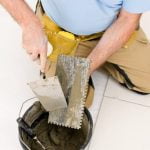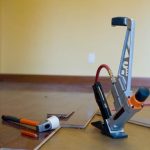Dave Ramsey’s 7 Steps to Financial Freedom is a widely recognized method for individuals to effectively manage their finances, achieve financial stability, and ultimately live a life free from debt. While these steps primarily focus on areas such as building an emergency fund, paying off debt, and saving for retirement, home improvement plays a crucial role in the overall financial plan as well.
When it comes to home improvement, it can be viewed as both an asset and a potential obstacle when following Ramsey’s 7 steps. On one hand, strategically investing in home improvements can increase property value and contribute to long-term wealth building. On the other hand, home improvement projects have the potential to divert funds away from essential steps like creating an emergency fund or paying off debt.
Understanding how home improvement fits into Ramsey’s 7 Steps is vital for individuals who want to strike a balance between improving their living spaces while staying on track towards financial freedom. Throughout this article, we will explore each step of Ramsey’s method and delve into the specific ways that home improvement can be incorporated into these milestones without jeopardizing your financial goals.
Whether you are considering renovations or upgrades for your current home or contemplating purchasing a new property that requires work – join us as we navigate through each step and weigh the implications of home improvement on your journey to financial freedom.
Understanding Dave Ramsey’s 7 Steps
Dave Ramsey’s 7 Steps to Financial Freedom is a popular framework that provides guidance on achieving financial stability and prosperity. Before delving into the topic of home improvement and how it fits into Ramsey’s steps, it is crucial to have a clear understanding of each step. This section will provide a brief overview of the 7 steps to ensure readers are well-informed before exploring the relationship between home improvement and financial planning.
- Step 1: Create an emergency fund – This step involves saving $1,000 as a starter emergency fund to cover unexpected expenses. The purpose of this fund is to provide a safety net, ensuring that individuals do not go further into debt when emergencies arise.
- Step 2: Pay off debt – In this step, Ramsey encourages individuals to become debt-free by using the Debt Snowball method. This involves paying off debts from smallest to largest while maintaining minimum payments on all other debts.
- Step 3: Save for retirement – Once debt is paid off, Ramsey recommends saving 15% of your household income for retirement in investments such as retirement accounts or mutual funds.
- Step 4: Invest in college education – This step focuses on saving for higher education expenses if you have children or preparing yourself for future educational needs. It emphasizes being proactive and building savings specifically designated for college tuition fees.
- Step 5: Pay off the mortgage – Ramsey suggests paying off your mortgage early as it eliminates one of the biggest monthly expenses and contributes immensely towards financial freedom.
- Step 6: Build wealth and give – At this stage, one should aim to build substantial wealth through wise investing, real estate ventures, or starting a business. Giving back is also emphasized during this step as a way to make a positive impact in both personal lives and communities.
- Step 7: Live and give like no one else – The final step encourages people who have achieved financial stability to enjoy their wealth and live fulfilling lives while continuing to give generously.
By having a solid understanding of each step, it becomes easier to see how home improvement fits into Ramsey’s 7 Steps. The subsequent sections will explore the relationship between home improvement and financial planning, providing insights on how to integrate these two aspects effectively.
Step 1
Creating an emergency fund is the first step in Dave Ramsey’s 7 Steps to Financial Freedom and is crucial for financial stability. However, when considering home improvement projects, it is important to acknowledge that these expenses can often disrupt the process of building an emergency fund. Investing a significant amount of money into renovations or repairs can leave individuals vulnerable in case of unexpected financial emergencies.
To mitigate this risk, there are several potential solutions and alternatives when it comes to balancing home improvement and building an emergency fund:
- Set a budget: Before starting any home improvement project, determine how much you can comfortably spend without depleting your emergency fund entirely. Establishing a realistic budget will guide your spending decisions and ensure you have enough funds set aside for unforeseen circumstances.
- Prioritize essential repairs: Evaluate which home improvements are essential versus those that are discretionary. Focus on addressing necessary repairs or safety concerns first before delving into cosmetic upgrades that can be deferred until later.
- Consider phased improvements: Instead of tackling all the desired renovations at once, consider completing them in phases over time. This allows you to spread out the costs and continue allocating funds toward your emergency fund throughout the process.
- Explore financing options: If urgent repairs or improvements cannot be postponed, explore financing options that minimize disruption to your emergency savings. For example, you might consider utilizing a low-interest credit card with a specific repayment plan or applying for a home equity line of credit (HELOC).
By implementing these strategies, homeowners can strike a balance between investing in their homes through improvement projects and maintaining a strong financial foundation with an adequate emergency fund. It is important to remember that while enhancing our living spaces is beneficial, having financial security should always be prioritized as we strive towards long-term financial freedom according to Ramsey’s principles.
Step 2
When implementing Dave Ramsey’s 7 Steps to Financial Freedom, Step 2 focuses on paying off debt. This step is crucial in achieving financial stability and creating a solid foundation for the future. While it may seem counterintuitive to consider home improvement projects during this stage, there are ways to incorporate them into your debt repayment strategy.
One option is to use cash for your home improvement projects. By saving up and paying for renovations or upgrades without going into further debt, you can avoid adding to your existing financial burden. Prioritize your debts and allocate any extra funds towards paying them off before embarking on any significant home improvement endeavors.
Another avenue to explore is leveraging your home equity to fund renovation projects. If you have built up equity in your home, either through mortgage payments or appreciation, you may be able to borrow against it to finance necessary improvements. This allows you to take advantage of low-interest rates and potentially deduct the interest paid on these loans come tax season.
It is important, however, to approach this option with caution and careful consideration. Taking on additional debt to finance home improvement projects should only be done if it aligns with your overall financial goals and if the potential increase in property value outweighs the added cost of borrowing.
| Debt | Interest Rate | Monthly Payment |
|---|---|---|
| Credit Card A | 18% | $200 |
| Credit Card B | 15% | $150 |
| Mortgage | 4% | $1,000 |
If you have some equity in your home and can secure a home equity loan or line of credit at a lower interest rate than your credit card debts, it may make financial sense to use that borrowed money to pay off the higher-interest debt. This approach helps consolidate your debts into a single, lower-interest payment, making it easier to manage and accelerate debt repayment.
Overall, integrating home improvement projects into your debt repayment strategy requires careful consideration. It is crucial to weigh the potential benefits against the costs involved and ensure that it aligns with your long-term financial goals. By using cash or leveraging home equity responsibly, you may be able to tackle both improving your home and reducing debt simultaneously.
Step 3
Step 3: Save for retirement: Highlight the importance of balancing home improvement expenses with long-term retirement savings goals and provide tips on how to prioritize both.
Saving for retirement is a crucial step in Dave Ramsey’s 7 Steps to Financial Freedom. However, many individuals also have home improvement projects that they want to pursue. Balancing these expenses can be challenging, but it is essential to find a way to achieve both goals.
When considering home improvement projects, it is important to assess their impact on your overall financial plan. Prioritizing retirement savings should be the main focus, as these funds will provide financial security in your golden years. Home improvements, on the other hand, may enhance your quality of life and potentially increase the value of your property.
To strike a balance between saving for retirement and funding home improvement projects, it is crucial to prioritize effectively. Determine which projects are essential and address any maintenance or safety concerns first before moving onto cosmetic upgrades. Additionally, explore cost-effective options or consider tackling small projects yourself instead of hiring contractors.
Here are some tips for managing both retirement savings and home improvement expenses:
- Set specific financial goals: Create a detailed budget that allocates funds towards retirement savings and home improvement projects each month. This will allow you to track progress towards both goals more effectively.
- Research costs and alternatives: Before embarking on any home improvement project, thoroughly research costs associated with materials, labor, permits, etc. Explore alternatives such as DIY solutions or less expensive options that still achieve the desired outcome.
- Consider financing options carefully: If you need financial assistance for either retirement savings or home improvement projects, carefully evaluate your options. For example, using a low-interest loan for necessary repairs could free up cash flow for increased retirement contributions.
It is important to remember that while home improvements can add value to your lifestyle and property, they should not come at the expense of neglecting long-term retirement goals. With careful planning and smart choices, it is possible to strike a balance that allows you to save for retirement while enjoying the benefits of home improvement projects.
| Retirement Savings Tips | Home Improvement Tips |
|---|---|
| Set specific financial goals for retirement savings. | Prioritize essential home improvement projects first. |
| Track progress towards retirement savings goals by creating a detailed budget. | Thoroughly research costs and explore alternatives. |
| Evaluate financing options carefully for both retirement savings and home improvements. | Consider DIY solutions or less expensive options where appropriate. |
Step 4
When it comes to investing in college education, many families prioritize saving for their children’s future. However, incorporating home improvement projects into the mix can sometimes disrupt these savings plans. It is essential to carefully consider the potential impact that home improvements may have on saving for college and devise strategies to ensure that both goals can be achieved simultaneously.
The Potential Impact of Home Improvement on Saving for College
Home improvement projects often come with significant costs that can divert funds away from college savings accounts. While enhancing one’s living space is valuable and enjoyable, it is important to assess the potential impact on long-term financial goals. Investing a substantial amount of money into home improvement may slow down or even halt progress towards saving for college, leaving families scrambling when tuition bills start rolling in.
Strategies to Ensure Both Goals Can Be Met Simultaneously
- Prioritize College Savings: If a family has limited resources and must choose between funding home improvements or saving for college, it is advisable to prioritize college savings. By establishing a realistic budget and sticking to it, families can allocate a certain amount each month towards their child’s education fund while still being able to handle necessary maintenance expenses at home.
- Seek Cost-Effective Home Improvement Solutions: Families should explore cost-effective ways to tackle home improvement projects while keeping an eye on their college savings goals. This could involve researching affordable alternatives, considering do-it-yourself options, or opting for smaller-scale renovations instead of full-scale renovations that require significant financial investments.
- Consider Timing: Timing plays a crucial role in balancing home improvement projects with saving for college. Families may decide to postpone major renovation projects until after their child graduates from high school or once they have completed their college savings goal. This approach allows them to focus on both endeavors without sacrificing either, ensuring a more balanced and financially prudent approach.
Step 5
Financial Implications of Investing in Home Improvement
When it comes to deciding between investing in home improvement or paying off the mortgage early, it is important to carefully consider the financial implications of each scenario. Investing in home improvement can potentially increase the value of your property and make it more attractive to potential buyers if you decide to sell in the future.
It may also enhance your overall quality of life and enjoyment of your home. However, it is crucial to remember that not all home improvement projects provide a high return on investment, so it is essential to weigh the potential benefits against the costs involved.
Weighing the Benefits of Paying Off the Mortgage Early
Paying off the mortgage early has its own set of financial advantages. Not only does it free up cash flow by eliminating monthly mortgage payments, but it also allows homeowners to save thousands of dollars in interest payments over the life of their loan.
With a paid-off mortgage, individuals have greater financial security as they no longer have a substantial debt hanging over their heads. Additionally, being mortgage-free can provide a sense of freedom and peace of mind during retirement or other financial hardships.
Striking a Balance: Factors to Consider
When contemplating whether to invest in home improvements or pay off the mortgage early, it is important to strike a balance between both goals. Consider factors such as the condition and age of your property, current interest rates, and personal preferences for living in an updated space.
If there are pressing repairs or upgrades that need attention, focusing on home improvement projects may be more beneficial in terms of increasing your property’s value and equity. On the other hand, if you are nearing retirement or have significant debt obligations, channeling funds towards paying off the mortgage could offer greater long-term financial security.
Ultimately, making this decision requires careful consideration and understanding how it aligns with Dave Ramsey’s 7 steps. It is wise to consult with a financial advisor or housing counselor who can provide personalized guidance based on your unique circumstances and future goals. By taking the time to evaluate the financial implications and benefits of each scenario, you can make an informed decision that aligns with your overall financial plan.
Step 6
One of the key steps in Dave Ramsey’s 7 Steps to Financial Freedom is Step 6: Build wealth and give. This step emphasizes the importance of increasing your net worth and using your resources to make a positive impact on others. While home improvement may not be the first thing that comes to mind when thinking about building wealth and giving, it can actually play a significant role in achieving both of these goals.
Certain home improvement projects can contribute to building wealth by increasing the value of your property. For example, renovating your kitchen or bathroom, adding square footage to your home, or improving energy efficiency can all have a positive impact on your home’s market value. By investing in these types of projects, you are essentially investing in yourself and your future financial stability.
Additionally, incorporating giving into your overall plan is an important aspect of Step 6. While it may seem counterintuitive to spend money on home improvement projects while also trying to give back financially, there are ways to do both.
One way is to choose projects that not only benefit you but also benefit others. For example, consider installing solar panels or making energy-efficient upgrades that not only save you money in the long run but also help reduce carbon emissions and support a more sustainable future for everyone.
Another way to incorporate giving into your home improvement plan is by donating funds or materials from your project to charitable causes. For instance, if you are remodeling your kitchen, consider donating any usable appliances or cabinets to organizations that provide housing for those in need. By finding creative ways to give back through your home improvement projects, you can build wealth while also making a positive impact on the lives of others.
Overall, Step 6 reminds us that building wealth and giving go hand in hand. While the connection between home improvement and financial freedom may not always be immediately obvious, certain projects can increase property value and contribute to long-term financial stability.
Additionally, by incorporating giving into your home improvement plan, you can make a positive impact on others while still achieving your own financial goals. With careful consideration and strategic planning, home improvement can play a vital role in achieving the overall vision of Dave Ramsey’s 7 Steps to Financial Freedom.
Step 7
In the pursuit of financial freedom, Dave Ramsey emphasizes the importance of living and giving like no one else. This means not only achieving financial stability and security for oneself but also enriching one’s life and making a positive impact on others.
While some may assume that home improvement projects are a frivolous expense that contradicts Ramsey’s principles, they can actually play a crucial role in creating a richer and more fulfilling life within the framework of his 7 Steps.
Investing in home improvement can enhance both the quality of your own life and the value of your property. When done wisely, it can provide you with a comfortable and enjoyable living space that truly feels like home.
Whether it’s renovating outdated kitchen appliances or adding an extra bedroom for growing families, making improvements to your home can directly contribute to your overall happiness and well-being. It creates an environment that is tailored to your unique needs, preferences, and lifestyle, ensuring that you have a place where you can prosper and find solace after a long day.
Additionally, certain home improvement projects have the potential to increase the value of your property. When it comes time to sell or refinance your home in the future, these improvements can yield significant returns on investment.
Upgrading essential features such as windows or energy-efficient systems not only improves your quality of life but also makes your property more attractive to potential buyers or lenders. By increasing its market value, you are building wealth through strategic investments in your home while adhering to Ramsey’s principles.
While embarking on home improvement projects aligns with living a richer life according to Ramsey’s philosophy, it is essential to approach them with careful consideration so as not to hinder progress within the financial steps outlined by Ramsey. Ensuring that you have achieved steps such as the creation of an emergency fund, paying off debt, and saving for retirement should be a priority before diverting funds towards home improvement.
By striking a balance between financial stability and creating a fulfilling living environment, you can truly live and give like no one else within the framework of Ramsey’s 7 Steps.
Conclusion
In conclusion, integrating home improvement into Dave Ramsey’s 7 Steps to Financial Freedom requires careful consideration and strategic planning. Throughout this blog post, we have explored the importance of home improvement in the overall financial plan and how it intersects with each step.
We began by understanding the 7 Steps and their significance in achieving financial freedom. Then, we delved into how home improvement can sometimes disrupt Step 1, which involves creating an emergency fund. However, we presented potential solutions or alternatives to ensure that investing in home improvement does not hinder building an emergency fund.
Next, we discussed how home improvement projects can be incorporated into debt repayment strategies in Step 2. Whether using cash or leveraging home equity, there are ways to balance debt repayment while improving one’s home.
In Step 3, saving for retirement is a crucial goal. We highlighted the need to prioritize both retirement savings and home improvement expenses. By striking a balance between the two, individuals can secure their future while also enjoying a comfortable living space.
Saving for college education was also addressed in Step 4. We acknowledged that investing in home improvement may impact college savings but provided strategies for accomplishing both simultaneously.
The decision between investing in home improvement versus paying off the mortgage early was analyzed in Step 5. It is essential to consider the financial implications of each scenario and weigh them against personal goals and priorities.
We then explored how certain home improvement projects contribute to building wealth in Step 6. Increasing property value can be a wise investment strategy when done strategically. Additionally, we discussed incorporating giving as part of the overall plan.
Finally, living a richer and more fulfilling life while adhering to Ramsey’s principles was emphasized in Step 7 through investing in home improvement projects that align with personal values and goals.
Frequently Asked Questions
What are Dave Ramsey’s 7 baby steps in order?
Dave Ramsey’s 7 baby steps are a series of financial milestones designed to guide individuals towards financial freedom. The steps are as follows: Step 1 is to save $1,000 for a starter emergency fund, which acts as a buffer against unexpected expenses. Step 2 is to pay off all non-mortgage debt using the debt snowball method, focusing on the smallest balances first while making minimum payments on other debts. Step 3 involves building a fully funded emergency fund of three to six months’ worth of living expenses.
Step 4 is to invest 15% of household income into retirement accounts such as IRAs and 401(k)s. Step 5 focuses on saving for children’s college education through college savings plans or other investment vehicles. Step 6 involves paying off the mortgage early by making extra principal payments or considering downsizing one’s home. Finally, Step 7 is about building wealth and giving by investing in mutual funds, real estate, and helping others through charitable donations.
What is the 80 20 rule Dave Ramsey?
The 80/20 rule, also known as the Pareto Principle, is frequently mentioned by Dave Ramsey in the context of personal finance management. This principle suggests that roughly 80% of results come from approximately 20% of efforts or inputs.
Applied to finances, it means that a significant portion of one’s financial success can often be attributed to relatively few key actions or decisions made consistently over time. In terms of money management, Ramsey encourages people to focus on those essential areas that yield the most significant impact on their financial situation — like creating a budget, reducing excessive spending habits, increasing income through additional work or side gigs, paying off high-interest debt aggressively – rather than getting caught up in minor details with little long-term effect.
What are the total money makeover steps?
The Total Money Makeover steps outlined by Dave Ramsey provide a step-by-step plan for people looking to transform their finances and achieve financial peace and freedom. These steps are as follows: Step 1 is to create a beginner emergency fund of $1,000 to handle unexpected expenses. Step 2 tackles debt using the debt snowball method, by listing debts from smallest to largest balances and focusing on paying off the smallest one first while making minimum payments on others. Step 3 involves increasing the emergency fund to three to six months’ worth of living expenses, providing a solid safety net.
In Step 4, individuals are advised to invest 15% of their income into retirement accounts to secure future financial well-being. Step 5 focuses on saving for children’s college education through dedicated college savings plans or other investment options. In Step 6, participants strive to pay off their mortgage early through additional principal payments or downsizing if possible. Finally, in Step 7, people work towards building wealth and pursuing generous giving by investing in mutual funds and real estate and contributing toward charitable causes.

I’m thrilled to have you here as a part of the Remodeling Top community. This is where my journey as an architect and remodeling enthusiast intersects with your passion for transforming houses into dream homes.





